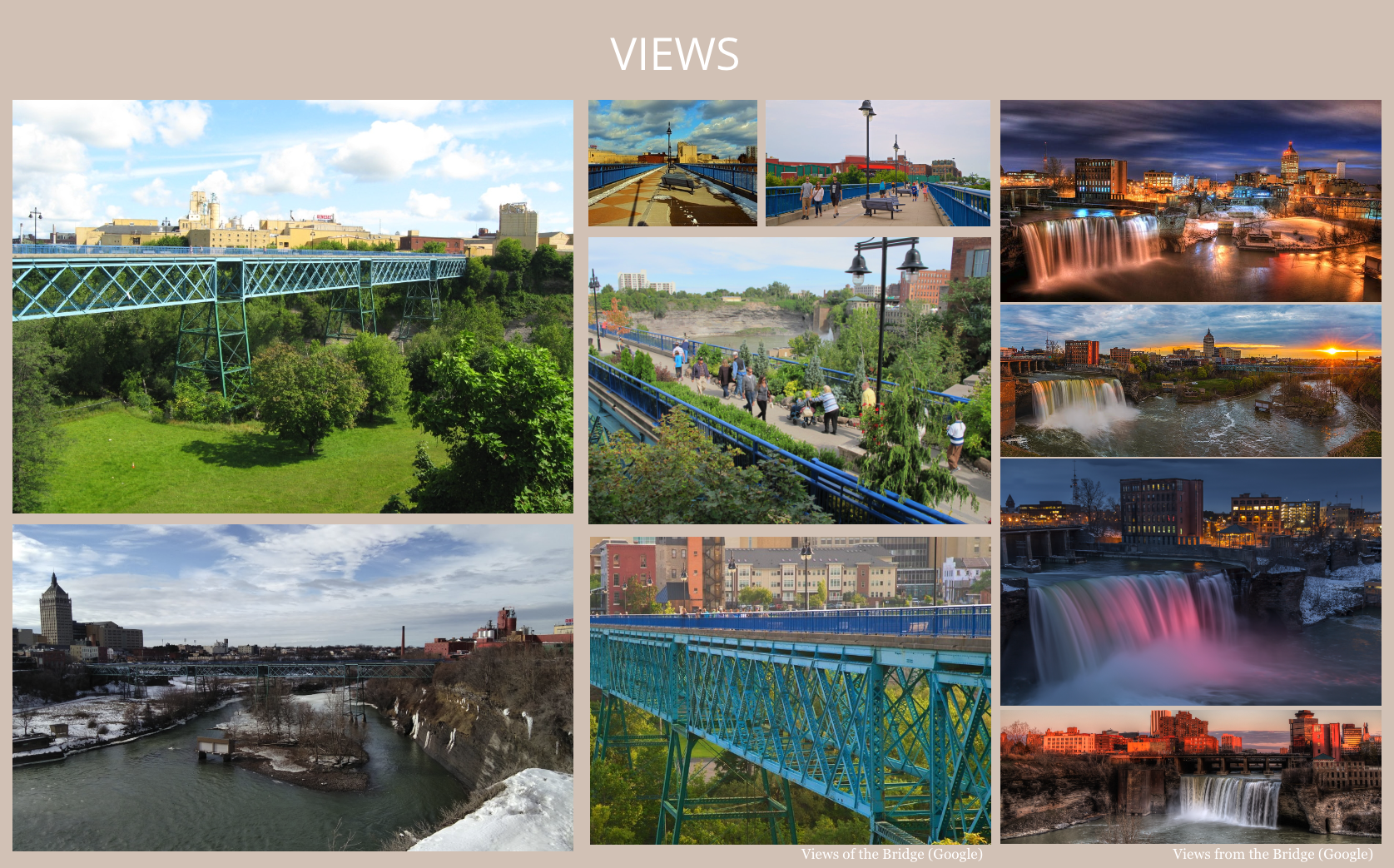
Pop Up Greenhouse
High Fall, Pont De Rennes Bridge, Rochester
BFA Sophomore Studio 3
“Land acknowledgements are a stepping stone to honouring broken treaty relationships.”
— Selena Mills
Land Acknowledgement
Haudenosaunee (hoe-dee-no-show-nee) means “people who build a house.” The name refers to a CONFEDERATION or ALLIANCE among six Native American nations who are more commonly known as the Iroquois Confederacy.
The confederacy made up of the Mohawks, Oneidas, Onondagas, Cayugas, and Senecas were intended as a way to unite the nations and create a peaceful means of decision making.
Often described as the oldest, participatory democracy on Earth, the Haudenosaunee Confederacy’s constitution is believed to be a model for the American Constitution. (Text from haudenosauneeconfederacy.com)
The Wenrohronon or the Wenro People, were an Iroquoian indigenous nation of North America, originally residing in present-day western New York, who were conquered by the Confederation of the Five Nations of the Iroquois in two decisive wars between 1638-1639 and 1643.
Language: Wenrohronon was an Iroquoian language and thus was related to Susquehannock, Wyandot, Erie, and Scahentoarrhonon. (Text from Google)
The Seneca (/ˈsɛnɪkə/) are a group of indigenous Iroquoian-speaking people native to North America who historically lived south of Lake Ontario. Their nation was the farthest to the west within the Haudenosaunee in New York before the American Revolution. (Text from Wikipedia)
SENECA (SEN-i-ka), or Onondowahgah, which means “People of the Great Hill.” (Text from americanindian.si.edu/)
Language : Onöndowa’ga:’ Gawë:nö׳ (Text from native-land.ca)
Image of Pont De Rennes Bridge (Google)
Recent History
After the defeat of Great Britain in the American revolution. Many native Americans, including the Iroquois, were coerced into giving up their land.
In 1780 land speculators Oliver Phelps and Nathaniel Gorham negotiated the purchase of 2.6 million acres from the seneca Indians.
By spring 1789, Ebenezer Allen's grist mill was completed, and he moved on to the tract, becoming the first resident of what is now Rochester. Eventually, the mill site was purchased by a group of Marylanders in 1803.
This group consisted of Colonel Nathaniel Rochester, Major Charles Carroll, and Colonel William Fitzhugh. In 1817 the Village Rochesterville was officially so named, and the City of Rochester was incorporated in 1834.
(Text from Rochester Public Library)
By 1950, the population of the city had grown slightly to 332,488, but Rochester was now only the 32nd largest city in the United States. During the 1950s, Xerox Corporation expanded as it exploited Chester Carlson's xerography patents. Xerox went on to become the world leader in xerographic imaging, designing and manufacturing many of its famous products in the Rochester area. Eastman Kodak continued to dominate the film and camera industry and was Rochester's leading industrial employer.
The population of the City of Rochester at the 2000 census was 219,773, down 33.9% from its peak in 1950.
(Text from Peck, William F. (William Farley), 1840-1908 History of Rochester and Monroe County)
Occupants: Government & Public
Originally meant for cars, the Pont de Rennes pedestrian bridge was actually built as the Platt Street Bridge in 1891, an 858-foot-long, truss bridge.
The bridge was a useful and productive east/west passageway which for decades, provided the only place to catch a glimpse of Rochester’s iconic High Falls. The arrival of the railroad and heavy industrial development in and around the High Falls area had encroached on what had once been a public gathering space, situated at the falls.
The Platt Street Bridge was closed to cars in 1977 and re-opened as the Pont de Rennes pedestrian bridge in 1982. (Text from highfallsroc.com)
Rochester 1838 (RocWiki)
Issue Impacting the Community
Rochester has been hit harder than the national average when it comes to job loss due to COVID-19
Rochester has had a net loss of nearly 52,000 jobs since March.
Hardest hit are the retail and hospitality industries: accounting for 50 percent of all jobs lost.
The good news is our consumer spending is back in the positive, but a lot of that money may be going to online giants like Amazon.
“All the motivations that led to the creation of ROC 2025 in the first place, slower job growth rate, less regional GDP growth compared to our peers, too little income growth, I think those all take on even greater urgency in the wake of the pandemic,” Stefko said. (Local expert.)
Rochester Downtown Development will be hosting two more events in the coming months: a vision for the future will be discussed in December, and rebuilding strategies will be discussed in February.

Average Climate
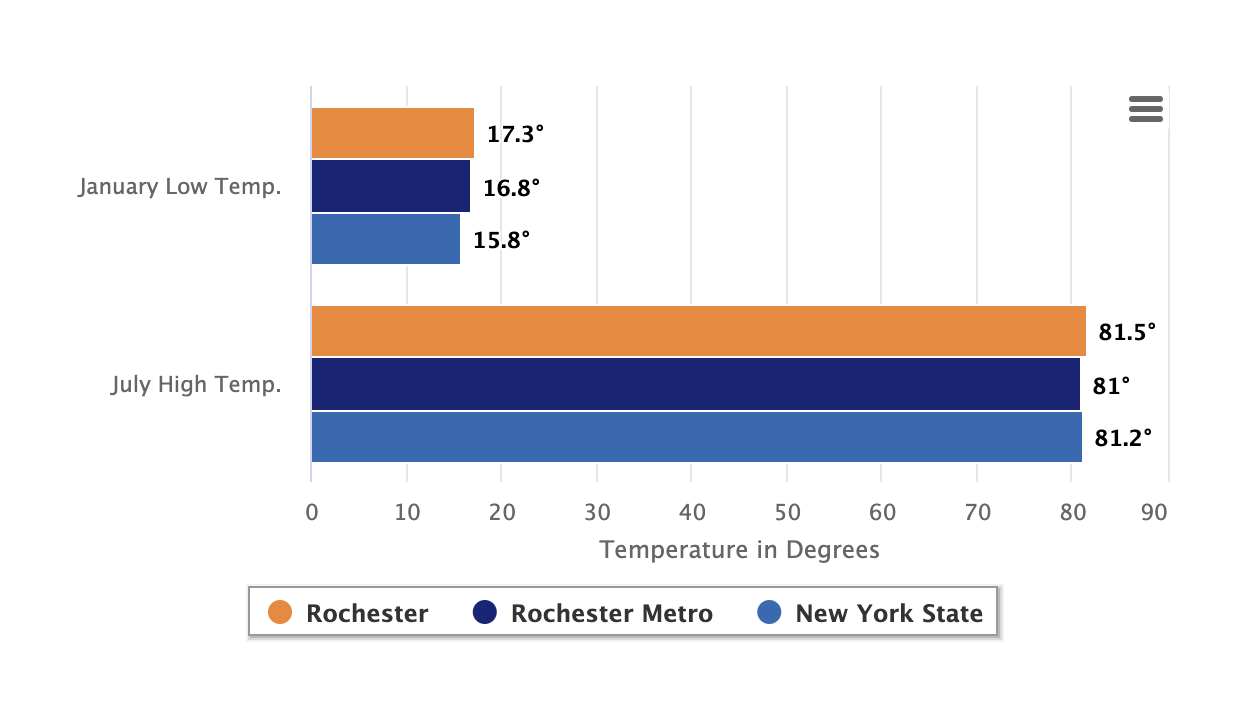
Temperature Comparison

Comfort Index
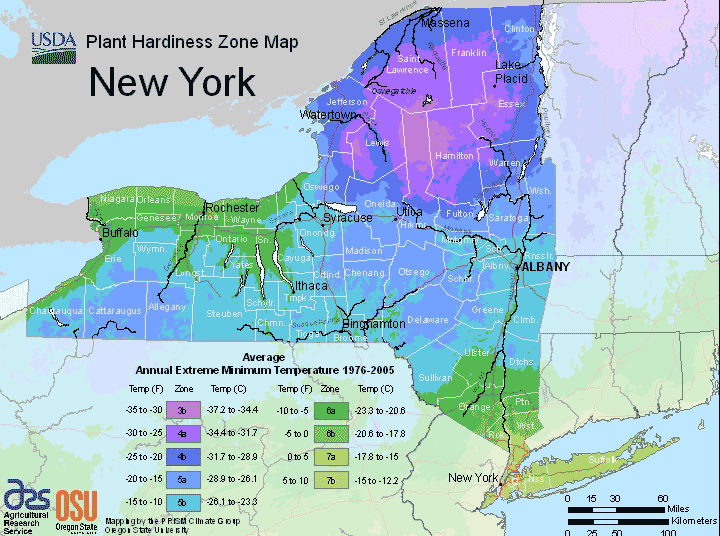
New York Climate Zone (Google)

High Temperature

Low Temperature
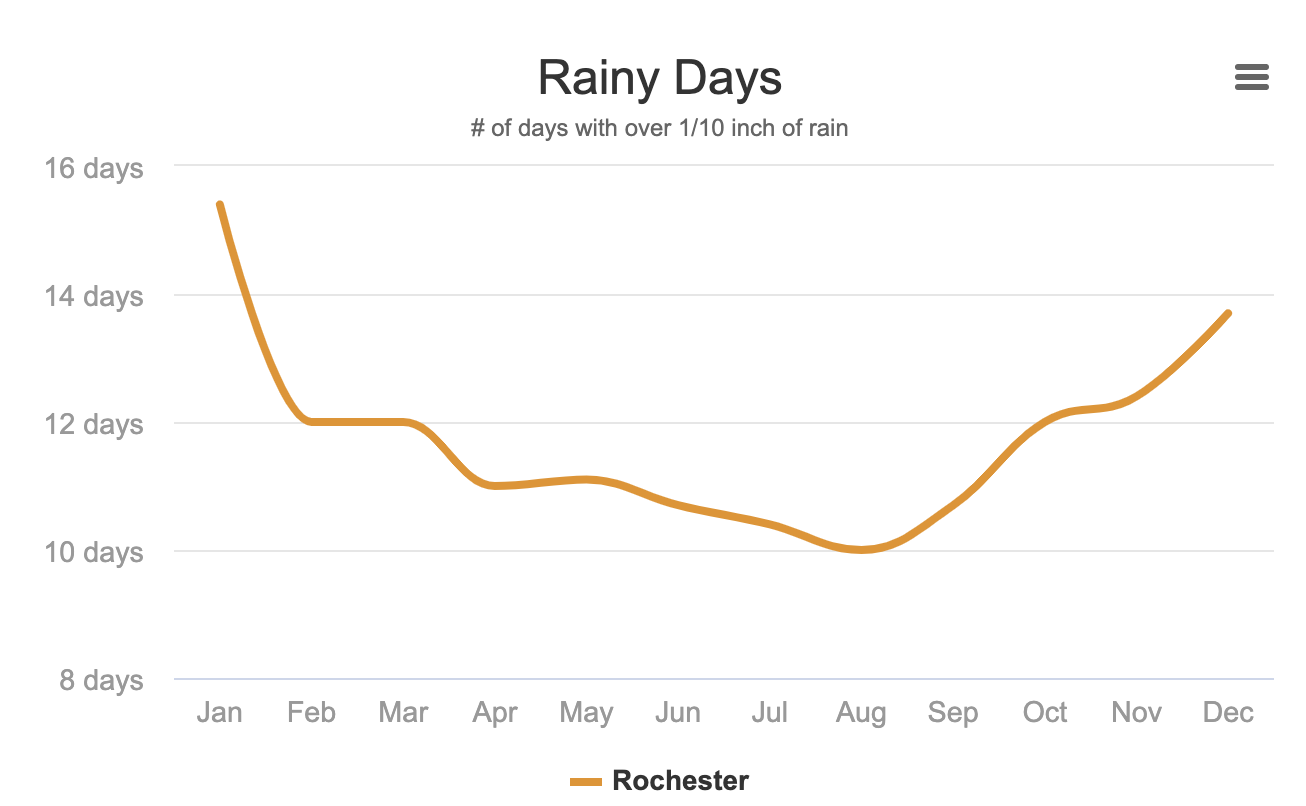
Rainy Days

Snoway Days All datas & Images from Bestplace.net
Site Study
Project Statement
Context and Opportunity The High Falls Pont De Rennes Bridge serves as a significant viewpoint in Rochester, yet this remarkable space remains underutilized. Rochester's challenging weather patterns and declining employment rates have contributed to population exodus, leaving this scenic location primarily visited by local residents. The site's potential as a community destination remains largely unrealized.
Proposal I propose establishing a greenhouse facility at the High Falls Terrace Platform, strategically positioned near the High Falls and Pont De Rennes Bridge in Rochester, NY. As the second cloudiest city in the United States, Rochester endures eight months of winter conditions that significantly impact residents' mental health. Seasonal Affective Disorder has emerged as a pressing social and psychological concern requiring thoughtful intervention.
Design Vision The greenhouse will serve as a focal point for the High Falls vista, providing a contemplative space for relaxation and community engagement. The design creates compelling contrast between the structural elements of the bridge and greenhouse architecture against the organic softness of the botanical interior—juxtaposing built infrastructure with natural forms.
Community Impact This initiative aims to foster local community gathering during extended winter months while addressing seasonal depression through therapeutic engagement with nature. The greenhouse will function as both a public amenity and educational resource, promoting awareness of New York State's native plant species. The project serves multiple stakeholders: residents seeking mental health support, the local community requiring winter programming, and the broader environment through native plant education and conservation awareness.
Design Intervation
Issues, Needs & Local Conditions
Rochester ranks as the second cloudiest city in the United States, maintaining a notably low comfort index due to its geographic positioning between the Great Lakes. Surrounded by water to the north and west, prevailing winds carry high precipitation levels from the lakes, resulting in persistently overcast skies.
The city's extended winter season—effectively eight months—severely limits outdoor activities and social engagement. Early darkness compounds the challenge, with businesses closing prematurely and public spaces becoming deserted by evening. During these prolonged indoor periods, natural light becomes insufficient even with artificial illumination, creating a psychological burden for residents.
These climatic conditions, coupled with declining employment opportunities exacerbated by the COVID-19 pandemic, have accelerated population exodus. Without intervention, continued depopulation threatens to transform this historically significant city into an abandoned urban center. Economic revitalization and weather-related quality of life improvements are essential to retain residents and attract new inhabitants.
Seasonal Affective Disorder (SAD) A clinically recognized mood disorder characterized by recurrent depression coinciding with specific seasonal patterns. SAD manifests in climates with reduced sunlight exposure, presenting symptoms including chronic fatigue, depression, hopelessness, and social withdrawal. In Rochester's context, this condition represents a significant public health concern affecting community well-being and economic vitality.
Stakeholder Analysis Direct Stakeholders: Rochester residents, regional visitors, municipal government Indirect Stakeholders: Local ecosystem and wildlife populations
Site Integration The intervention aims to elevate High Falls as a premier destination, ensuring continued maintenance and preventing site abandonment through increased community engagement and tourism.
Temporal Framework Adaptability: Modular construction allows for reconfiguration and seasonal assembly/disassembly Material Strategy: Sustainable materials including rammed earth, wool, and timber facilitate biodegradability and soil enrichment upon decommissioning Seasonal Application: The installation operates during cold months, encouraging outdoor engagement while remaining dormant during temperate seasons Program Evolution: Rotating installations prevent visual fatigue while inviting community participation and creative contributions
Mobility and Replication The program's modular design enables replication across similar climatic contexts. Construction components support reassembly and material reuse, while sustainable materials allow for responsible recycling or natural decomposition.
Precedents/ Case Study
Sketches




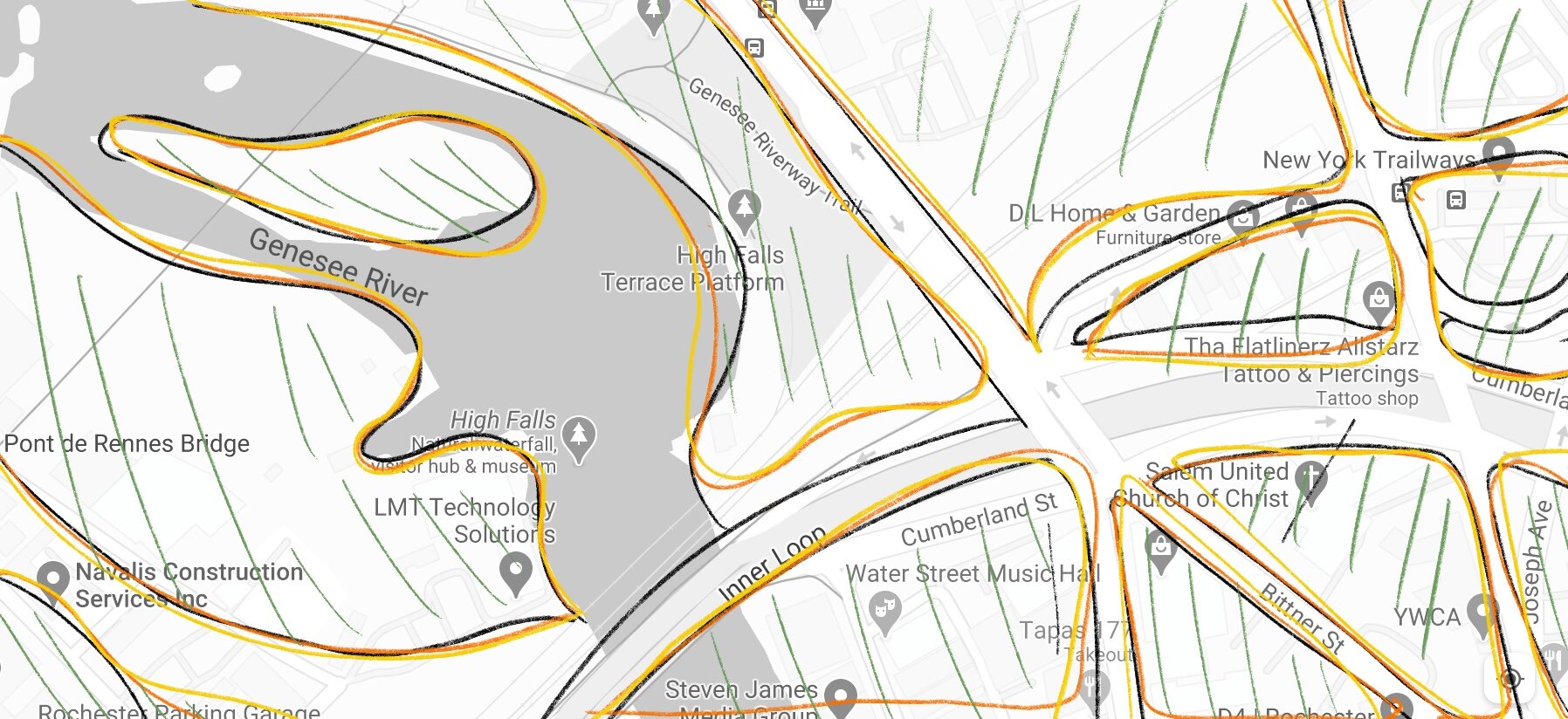



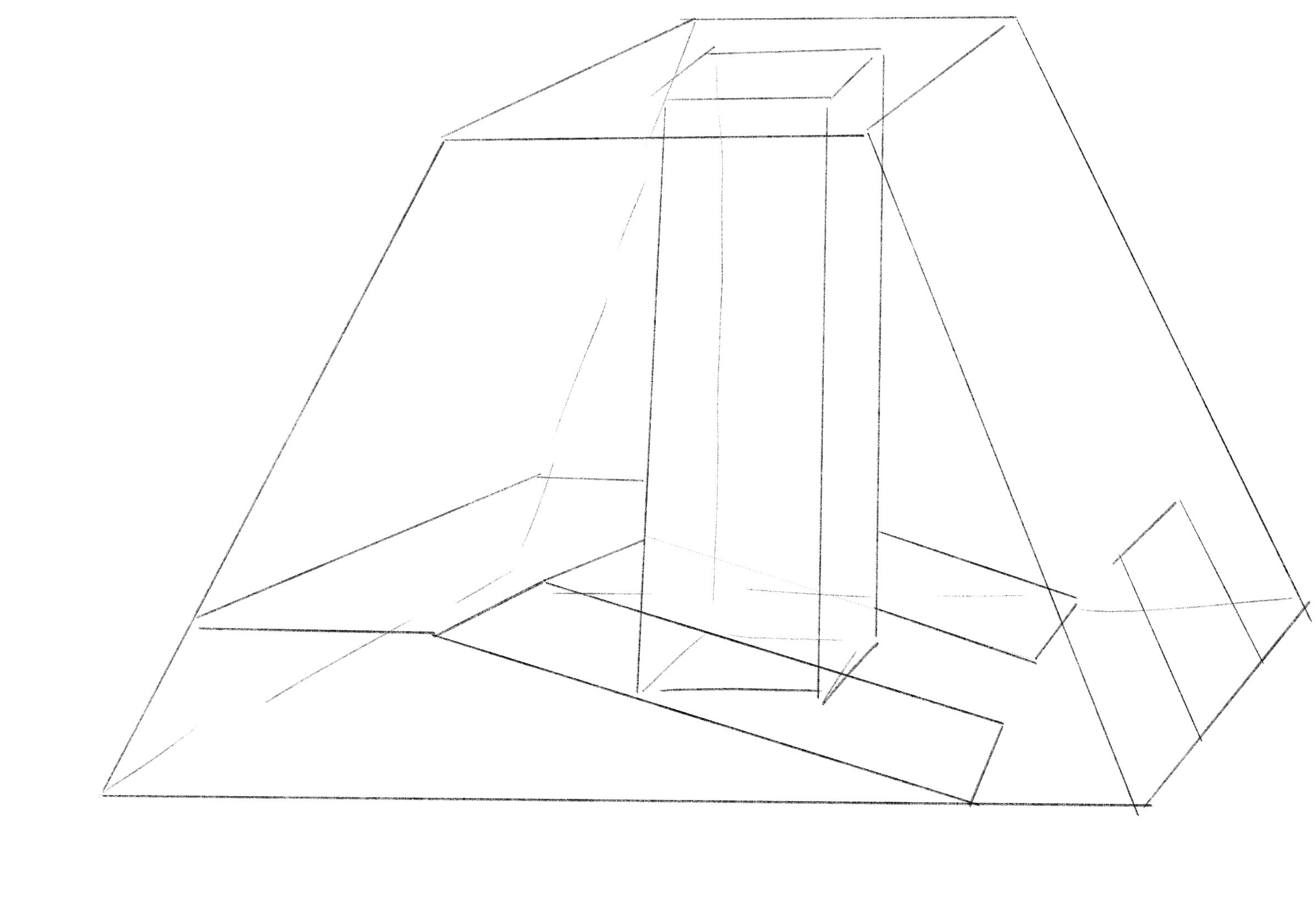

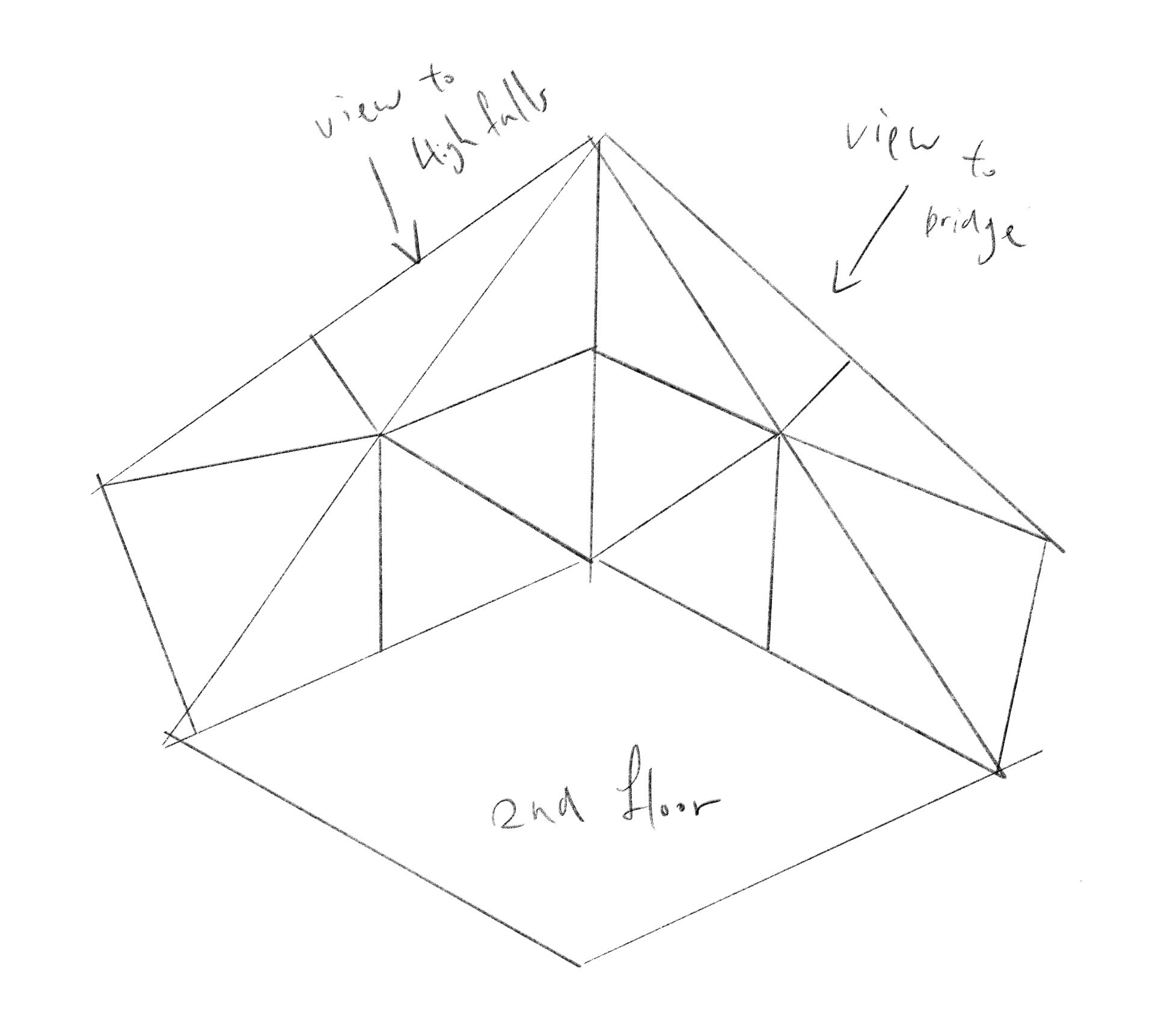



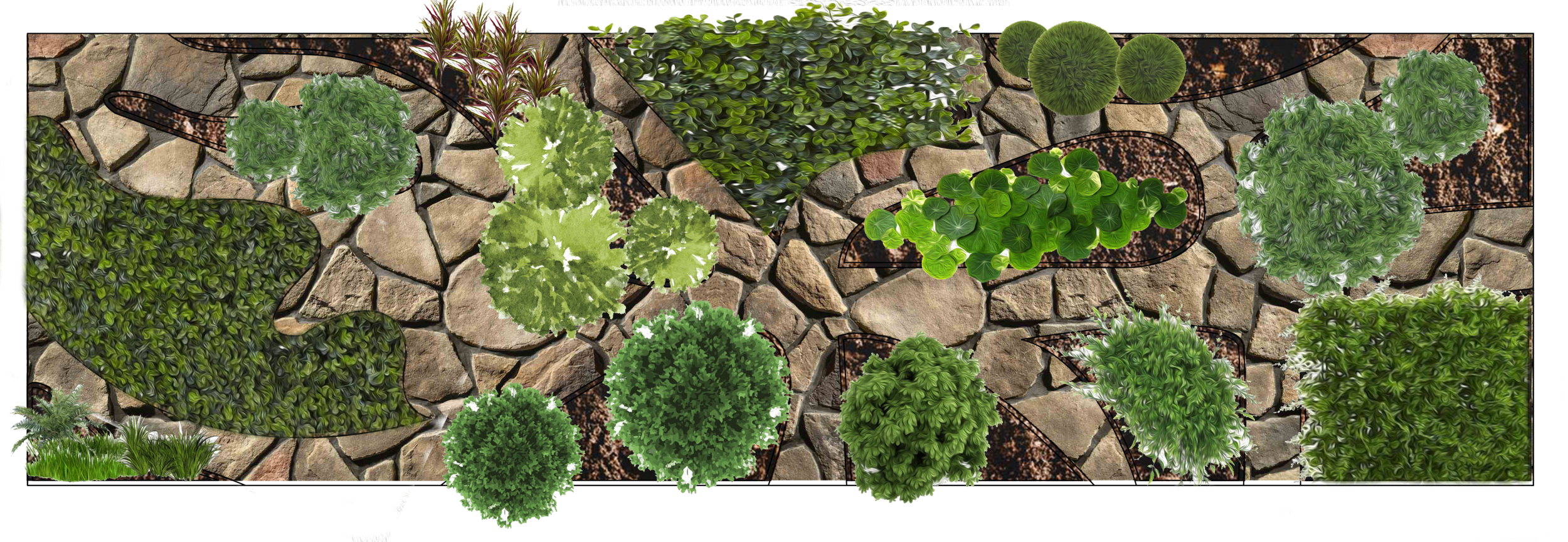
Design Considerations
Optimal Orientation In North American climates, greenhouse orientation should prioritize southern or southeastern exposure to maximize early morning solar gain—critical for cold climate performance. Eastern orientation provides acceptable alternatives when combined with southern glazing elements. Western exposure should be avoided due to overheating risks during afternoon hours. However, in consistently overcast regions like the Pacific Northwest, orientation becomes less critical as cloud cover naturally diffuses sunlight across the entire sky dome.
Dimensional Proportions Industry best practice recommends a 3:1 length-to-width ratio, with the longer axis oriented east-west. This configuration maximizes solar heat gain duration throughout the daily solar path, optimizing thermal performance and energy efficiency.
Structural Design - Roof Configuration A 6/12 roof slope (50% grade) provides optimal snow load shedding in northern climates. The greenhouse's interior warmth creates a beneficial thermal dynamic: snowmelt forms between the polycarbonate glazing and accumulated snow, creating a lubricating layer that facilitates natural snow removal under gravity.
Snow Management - Freeboard Requirements Adequate freeboard—the vertical clearance between the lowest roof point and ground level—prevents snow accumulation from obstructing the structure. In heavy snowfall regions, minimum 3-4 foot clearance ensures snow buildup won't compromise roof drainage or ventilation systems.
Pop Up Green House
3D Model








